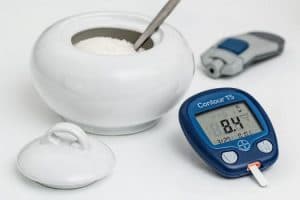Typically, I read a great article, or two, or more, and feel compelled to write, either to share and expand or share and minimize. sometimes the article(s) in question are questionable – usually press-related summaries leave something to refute. Occasionally there’s just so much merit in these articles that I have to chime in and let the readers know that I’m a fan – somehow giving credibility to what is already written. Most of the time, when I do this, it’s to reassure the readers that the article is not a cherry-picked example of self-supported articles/data in order to sell to a publisher. This is the former: you gotta read about it.
First, some basics. There are two basic ways to do cardio training: continuous and discontinuous. The latter is often referred to as interval trainng, where you do a work bout and a recovery bout, either passively or actively. Thus, you could sit and rest – as a cardiac patient may need to; or you would continue moving – walking/jogging – to dissipate lactic acid and allow sufficient recovery to resume the hard work ahead. Both are healthful and helpful tho only the interval training will enhance anaerobic power and muscle mass to any great degree.
Well, the ACSM newsletter has this piece to support it:
Active Voice: Is High-Intensity Interval Training a Time-Efficient Exercise Strategy to Promote Health?
By Martin Gibala, Ph.D.
Viewpoints presented in SMB commentaries reflect opinions of the authors and do not necessarily reflect positions or policies of ACSM.


High-intensity interval training (HIT) describes exercise that is characterized by brief, intermittent bursts of vigorous activity, interspersed by periods of rest or low-intensity exercise. HIT is infinitely variable, with the specific physiological adaptations induced by this form of training determined by various factors including the precise nature of the exercise stimulus (i.e., the intensity, duration and number of intervals performed, as well as the duration and activity patterns during recovery). When compared on a matched-work basis, or when estimated energy expenditure is equivalent, HIT can serve as an effective alternative to traditional endurance training, inducing similar or even superior changes in a range of physiological, performance and health-related markers in both healthy individuals and diseased populations.
Less is known about the effects of low-volume HIT, but growing evidence suggests this type of training stimulates physiological remodeling comparable to moderate-intensity continuous training despite a substantially lower time commitment and reduced total exercise volume. The most common model employed in low-volume HIT studies has been the Wingate Test, which consists of a 30-second all out cycling effort against a supra-maximal workload. Subjects typically perform 4-6 work bouts, separated by approximately four minutes of recovery, for a total of 2-3 minutes of intense exercise during a training session that lasts approximately 20 minutes. As little as three sessions per week of this type of training induces skeletal muscle and cardiovascular adaptations comparable to several hours per week of continuous moderate training, as generally recommended by public health agencies.
Wingate-based HIT is, however, extremely demanding and may not be safe, tolerable or appealing for some individuals. We therefore sought to design a more practical model of low-volume HIT that is time-efficient while also having wider application to different populations. The new HIT model consists of 10 x 60 second work bouts at a constant-load intensity that elicits approximately 90 percent of maximal heart rate, interspersed with 60 seconds of recovery. The protocol is still time-efficient in that only 10 minutes of exercise is performed over a 20-minute training session. Importantly, this practical, time-efficient HIT model is still effective at inducing rapid skeletal muscle remodeling towards a more oxidative phenotype, similar to our previous Wingate-based HIT studies and high-volume endurance training. These findings are noteworthy from a public health perspective, given that lack of time remains one of the most commonly cited barriers to regular exercise participation.
Relatively high-volume HIT protocols that are comparable to traditional endurance training have been shown to improve cardiorespiratory fitness and other health status markers in a fairly large number of studies, including those conducted on people with coronary artery disease, congestive heart failure, middle age adults with metabolic syndrome and obese individuals. In contrast, low-volume HIT studies in persons who might be at risk for cardiometabolic disorders or patients with chronic disease are very limited. Our groups recent study (Hood et al. 2011), reported in the Oct. issue of MSSE, showed that six sessions of the practical HIT model over two weeks improved estimated insulin sensitivity in previously sedentary, overweight individuals. Insulin sensitivity was calculated based on single fasting glucose and insulin measurements and therefore primarily reflects hepatic as opposed to peripheral insulin sensitivity. We also recently showed that low-volume HIT was effective and well-tolerated in people with type 2 diabetes (Little et al. 2011). Two weeks of HIT reduced average 24-hour blood glucose concentration and the magnitude of glucose spikes after meals, measured via continuous glucose monitoring under standardized diet but otherwise free-living conditions. While the preliminary data from these small, proof-of-principle studies are intriguing, large-scale studies are clearly needed to resolve whether low-volume HIT is a safe, realistic and time-efficient exercise alternative to reduce the risk of cardiometabolic disease or improve health and wellbeing in patients with chronic disease.
The NY Times had this one: http://well.blogs.nytimes.com/
and so on and so on………
If anything is to be gleaned from these articles it’s this: intervals are good for you at any age and almost any stage of fitness. What they don’t tell you is HOW to implement them. so that’s my job.
First, even if you are totally out of shape, intervals work – simply. Just do some activity for a brief period of time – a few minutes to 10 or more if so inclined. Then, rest, do something else, or go about your day and repeat. In other words, nothng structured, just do brief periods of activity a couple to three times a day. That said, vacuuming the rug and later on cleaning the kitchen floor do not quite fit this model. I’m talking about taking a walk, climbing stairs, marching in place, etc -something specifically active by choice – if done a few times a day in small blocks, counts. For those accustomed to exericise, break up two of your weekly workouts into shorter segments of higher intensity, and allow for partial recovery – not full, so keep moving along the path of fitness even if not at your usual intensity. do x-number of repeats – the longer the work bout, the fewer the repeats, and the shorter the relative rest (so if you run faster for 3 minutes, you might just jog 3 minutes). The converse of this is if you run hard for 15 seconds you may need to jog light for 2 minutes. This is the difference between a 1:1 and a 1:8 ratio, and remember, hard is relative to you, not to an olympic athlete. If it gets you breathing harder than you normally would, it’s an interval. How many to do? Up to you, of course, but I’m conservative here: start with 3-5 cycles of this work:recovery, and shorten the overall workout. Depending on how long you intend to work out, you may cut your overall time by half. I keep my workouts to 20 minutes and some are with very short bursts and longer recoveries, others are 1minute on, 1 easy. Vary it. Normally we recommend to do intervals 2-3/wk, but if you vary them so as to not overtrain in one setting – super fast, for ex – you are not likely to injure yourself.
Depending on what your trianing consists of , you may have to incur some alternative strength training to avert joint injuries. So I always suggest alternating modalities – run, cycle, elliptical, row, etc. save those joints – gotta hold you up many more years if you’re gonna train consistently and vigorously.
Don’t neglect nutrition and hydration, esp as the weather warms up beyond the unusually warmth of this winter.
Finally, bring a sweat rag – you’ll need it.














